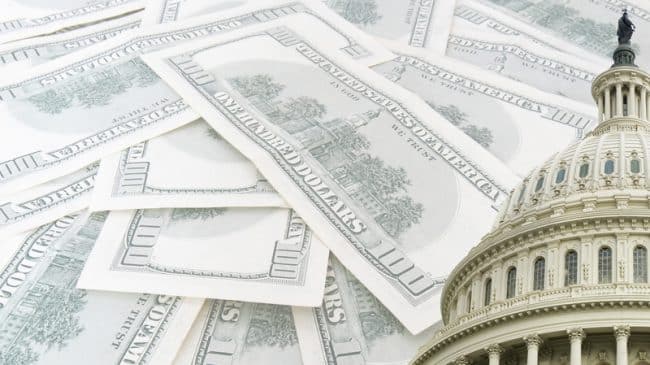Previous: 4. Energy > Taxpayer’s Guide > Next: 6. DHS
Summary: Nearly $9.8 billion for the operating activities of the federal government and for Small Business Administration programs. This section also establishes the oversight board that governs stimulus spending.
>> Spending
$5.5 billion for the Federal Buildings Fund. This money will go towards making federal office buildings and courthouses more energy efficient, with the goal of saving money on energy bills in the future and creating jobs in the short-term.
This project is probably not a bad idea. Making federal offices more energy efficient will save the government money over time and eventually earn back what we put into renovating them. Updating building technology is a necessary part of maintaining any building. However, this should not be treated as a job creation mechanism, but rather developed out of a thorough cost-benefit analysis of the value of the project. If public buildings need to be renovated as a part of neglected maintenance or ware over time, then deal with that problem on its own merits. The jobs created by renovating federal buildings will be temporary by the nature of the project, meaning that this stimulus money will not create sustainable jobs.
$3 billion limit for the SBA Secondary Market Guarantee Authority. Creates a new lending authority within the Small Business Administration that will insure specific types of investments. The newly created “authority” will have the power to use up to $3 billion in guarantees.
$450 million Small Business Administration General Fund. This money goes to the general operating budget of the SBA, with $69 million for salaries, marketing costs, technical upgrades, and administrative activities; $363 million for lending to businesses; and an additional $15 million for specific government bonds.
Much of the language in Title V does not allocate specific money but expands the authority of the SBA to use its money and future money. The SBA can now insure up to 90 percent of the loans given to small businesses, a move intended to encourage increased lending to small businesses, and the SBA offer low-interest refinancing for struggling small businesses. The stimulus bill also creates the “Business Stabilization Program” to provide loans to small businesses that are strong but experiencing temporary financial hardship.
$300 million for Replacing the Federal Vehicle Fleet. The federal government owns vehicles for hundreds of uses, from security details to agency business to transportation equipment. This money will be used to buy new, energy-efficient hybrid and electric vehicles to replace the current fleet. There is no estimate given as to how many cars this money will buy, or what percentage of the federal vehicle fleet will be replaced.
$100 million for the Community Development Financial Institutions Fund. The CDFI Fund was created in 1994 to help poorer regions of the country get access to credit, capital, and financial services through loans, direct investing, and tax credits. This money will go into the general CDFI Fund budget, but at least $8 million is earmarked for programs benefiting Native Americans.
$84 million for the Recovery Act Accountability and Transparency Board. This board will oversee all stimulus spending, collecting reports from agencies and governments that receive money, making recommendations on how to most effectively use the money, and be accountable to the president and Congress for preventing fraud, waste, and abuse. Title V of the stimulus grants $84 million for the board to use for administrative purposes and to establish a website (though Section 1529 says the board can request whatever money it needs to accomplish its mission). Title XV spells out in detail how the board is supposed to operate and be set up. The stimulus website is directed to simply and regularly communicate detailed information on how government agencies are planning to use the money, how the stimulus money is actually being used, and how many jobs have been created or saved.
>> Commentary
More from Reason on Government Reform.
>> Government Recovery Websites
General Services Administration: http://www.gsa.gov/recovery/
Small Business Administration: http://www.sba.gov/recovery/
Previous: 4. Energy > Taxpayer’s Guide > Next: 6. DHS
Written by: Anthony Randazzo. Please email with any comments or corrections.
